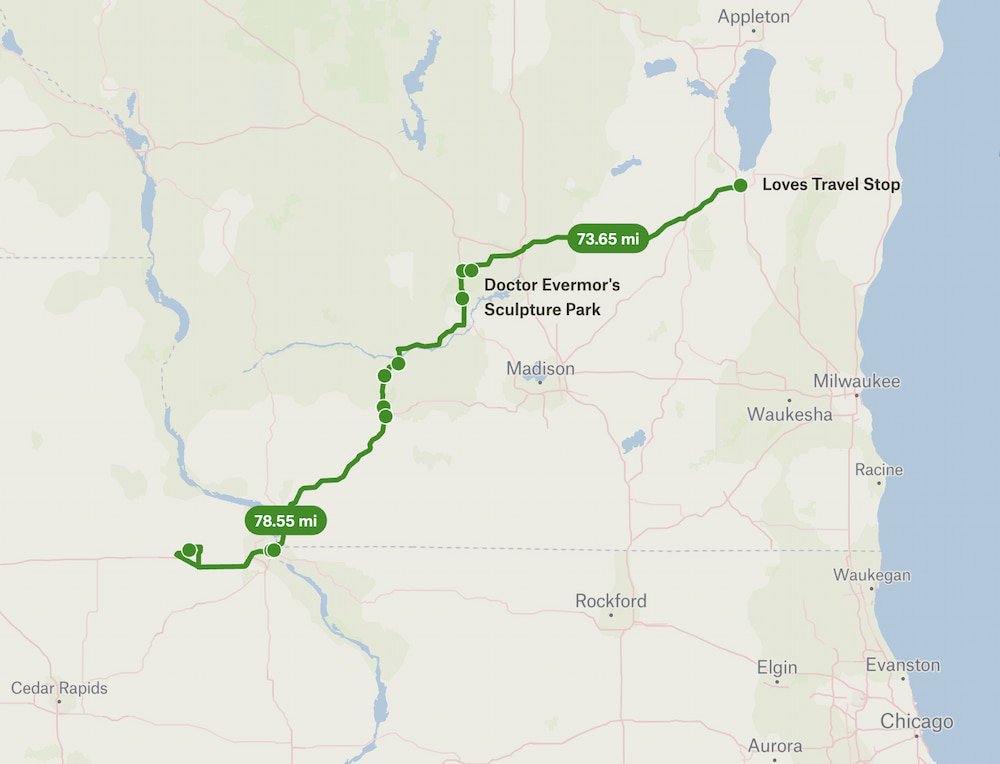Since we'd parked by the Port of Dubuque overnight, we walked along the marina, happy to have the opportunity to go on such a lovely stroll by the water first thing in the morning. There were a few folks out already strolling along the path. A couple of people were out walking their dogs, and there were a group of retirees sitting on benches and chatting, while looking out at the water. We got as far as seeing the Dubuque Shot Tower, one of the last remaining shot towers in the U.S., which was built in The 1856 to provide lead shot, creating spheres the right size to fit into shot guns. It is no longer operational, but fascinating to know the process of creating lead shots!

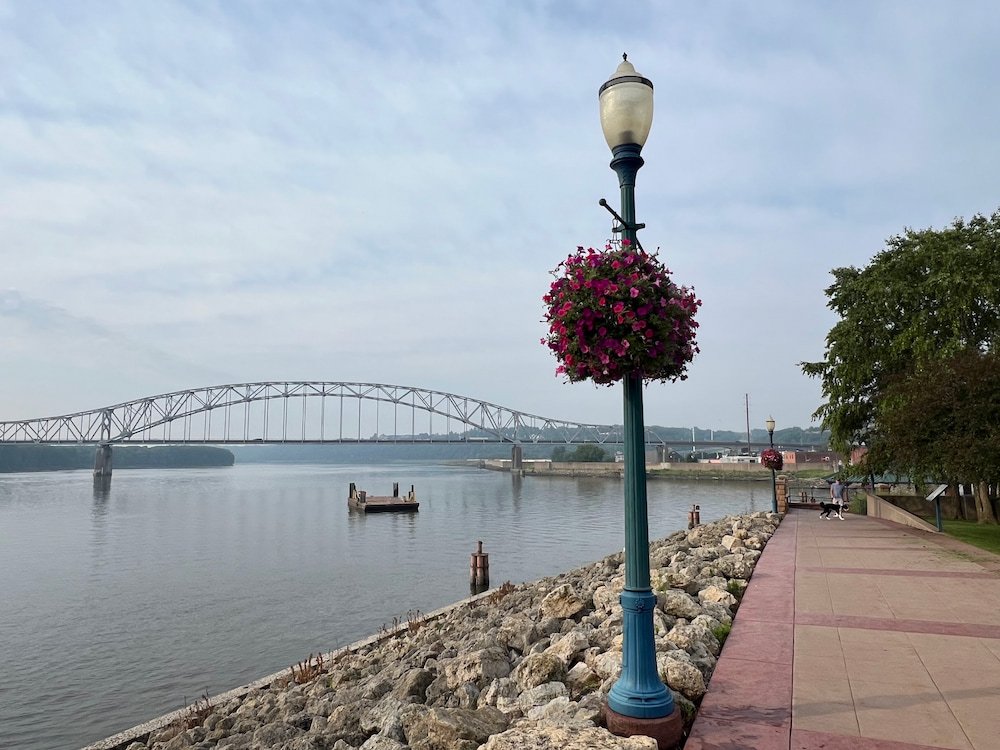
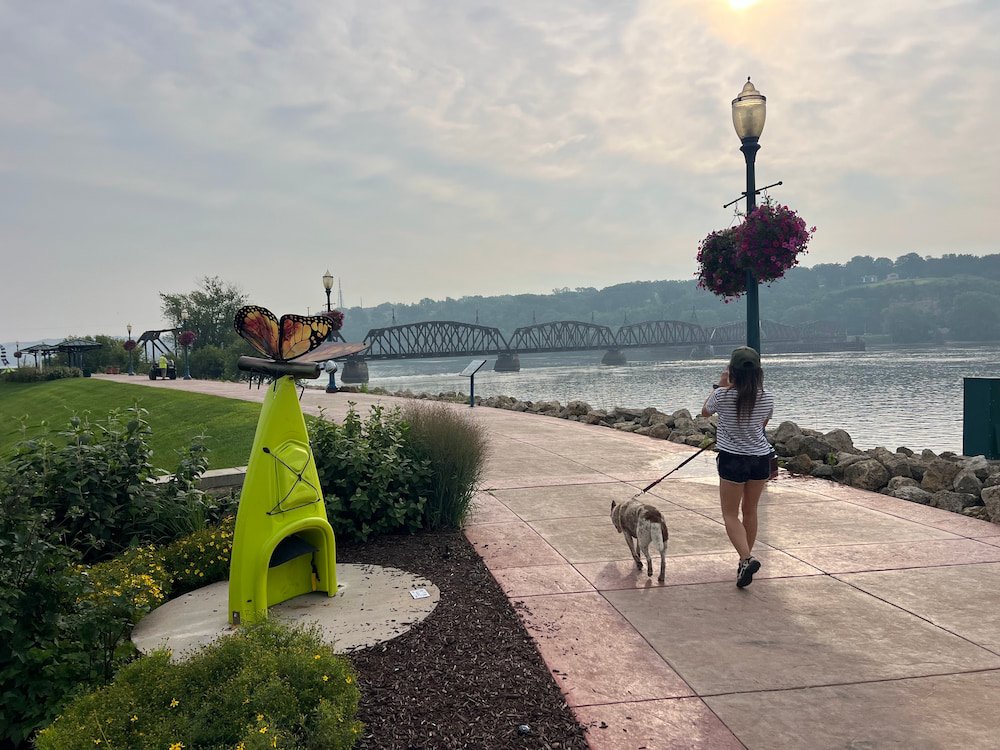


Dubuque isn't a big city, but it's charming and clearly has a lot of history. There's an interesting Town Clock that's in the middle of the road, and a lot of cool murals around, including one highlighting diversity with fists pumped up towards the sky, and one of a face in blue, where the windows of the building make up the eyes.

Field of Dreams
Because Iowa is known to produce so much corn, it was the obvious choice to film the 1989 movie "Field of Dreams," and the baseball field amid the cornfields where a lot of the movie is set, still gets a lot of visitors today. The field is open year-round, and it's a donation-based entry to wander around the set, but extra to do a tour of the house next to the cornfields (we won't spoil the plot in this post). It definitely feels very rural, with the smell of cow dung hitting our noses as soon as we got out of the RV.

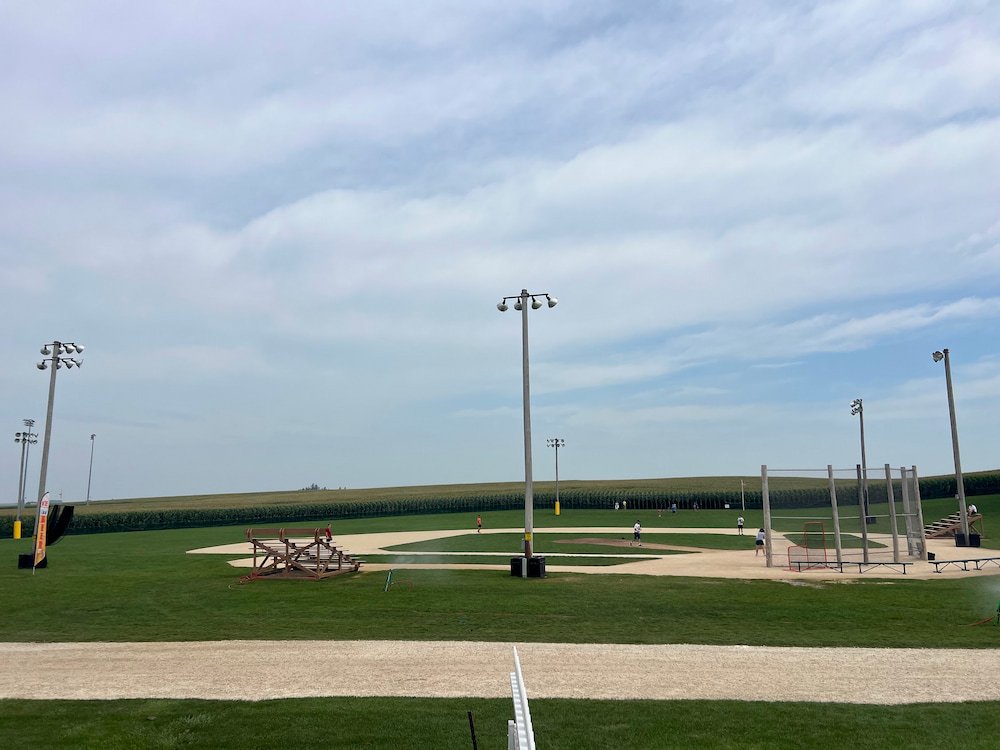

A lot of the people visiting were wearing baseball jerseys, shirts, and caps to keep in theme with their visit, and there were families playing baseball on the field. It seems that there were a few visitors that brought their own equipment, but there are also a few mitts and bats by home base. While it wasn't open at the time, visiting the Field of Dreams is an kind of like being at a baseball game as they sell food onsite.
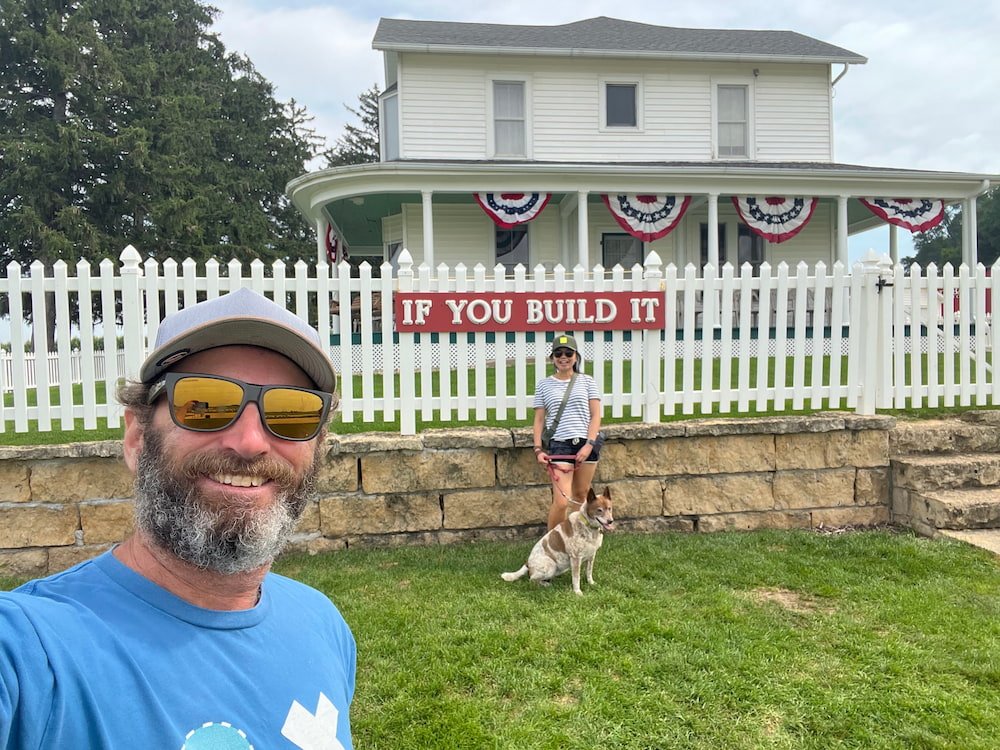

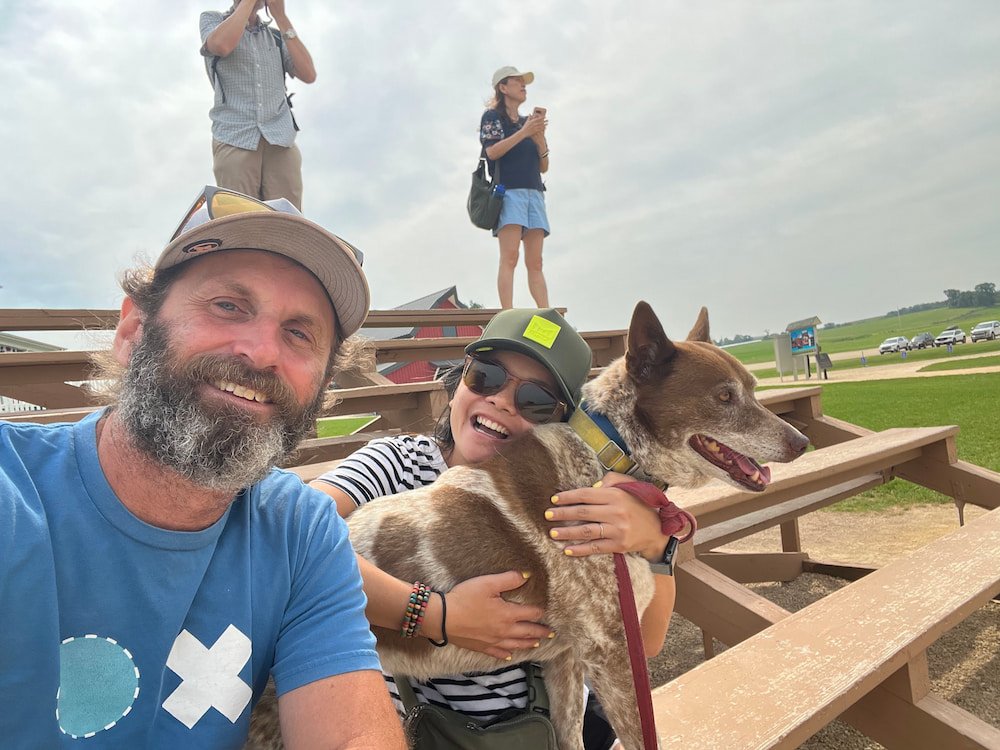

We took some photos of the house, and it was great that the corn fields are really high (just like in the movie), as there's a section of it that isn't fenced off, so you can also wander into them. The corn fields looked very healthy, and one stalk grows 1-2 ears of corn. Michael hit a few balls with a father and son, so he also had his baseball experience while Sheila and Lisette sat in the bleachers. Sheila got very excited whenever Michael hit the ball, and would bark excitedly. We're sure if we let her, she would have loved to run after the balls on the field and have her own play time!
Stratofreighter at the Don Q Inn
After driving past countless corn fields, red barns and tall silos, we turned back into Wisconsin, overlapping with some roads that we'd been through yesterday to then get to the Don Q Inn in Dodgeville, Wisconsin. But we weren't here to seek alternate accommodation--rather, the Inn has a Boeing 377 Stratocruiser (a C-97 Stratofreighter) parked outside as a unique roadside attraction. Purchased by the Inn's founder, the Stratofreighter was used in the 1940s up to the 1970s. There are only a couple dozen surviving, and this was used for cargo transport. Today, anyone can go up to the one at the front of the Don Q Inn, and go inside to see how massive the plane is inside, and check out where the cargo would have been buckled in, and what the controls look like at the front. It's obviously showing its age and looking worn inside, but we thought it added to its retro charm, and let our imagination envisage what it looked like in its heyday.



The House on the Rock
We contemplated paying for a tour to see The House on the Rock, a massive complex started in 1945 by an eccentric designer and collector called Alex Jordan. He opened the house to the public in 1960, and even as we drove into the long, long driveway, we could see its design is steeped in total maximalism, with enormous flower pots lining the road that had dragons and other mystical creatures scampering all over them.



The house is made of 3 sections: the first closes at 2pm and includes an Asian garden and the original house. Section 2 includes a recreation of a 19th century street, a 200-foot long sea creature and model ships, automated music machines, and a carousel room. Finally, section 3 includes an organ room, a doll house room, a circus room, and a Japanese garden. It's all sorts of whacky and wonderful, but we were already too late to visit Section 1 and we were off to another house of a totally different style that we'd booked...
Frank Lloyd Wright's Home
...And that house was Frank Lloyd Wright's Home nearby, called Taliesin, which means "shining brow" in Welsh, in honor of his heritage. Taliesin sits on 800 acres, where he lived, worked, played, innovated and mentored generations of future architects. It's recognized as a National Historic Landmark and is also on the UNESCO World Heritage Site.

There are several different options for tours: a 4-hour estate tour, 2.5-hour highlights tour, 2-hour house tour, and a self-guided tour. We chose the self-guided tour, where we get on a shuttle bus that then drives us to Wright's home. There's a guide on the tour, although he called himself a "host" as rather than talking to us and providing information, we were all given tablets to tour the home at our own pace, listening to the audio or reading the transcripts about each room. There are hosts also around the home and they are all available to answer any questions we may have. While it was good to have some interactivity as an option, and the watching additional videos of Wright and going at our own pace was a benefit of doing such a tour, it is still nice to do a tour with a guide who can add more color and entertainment to the experience.
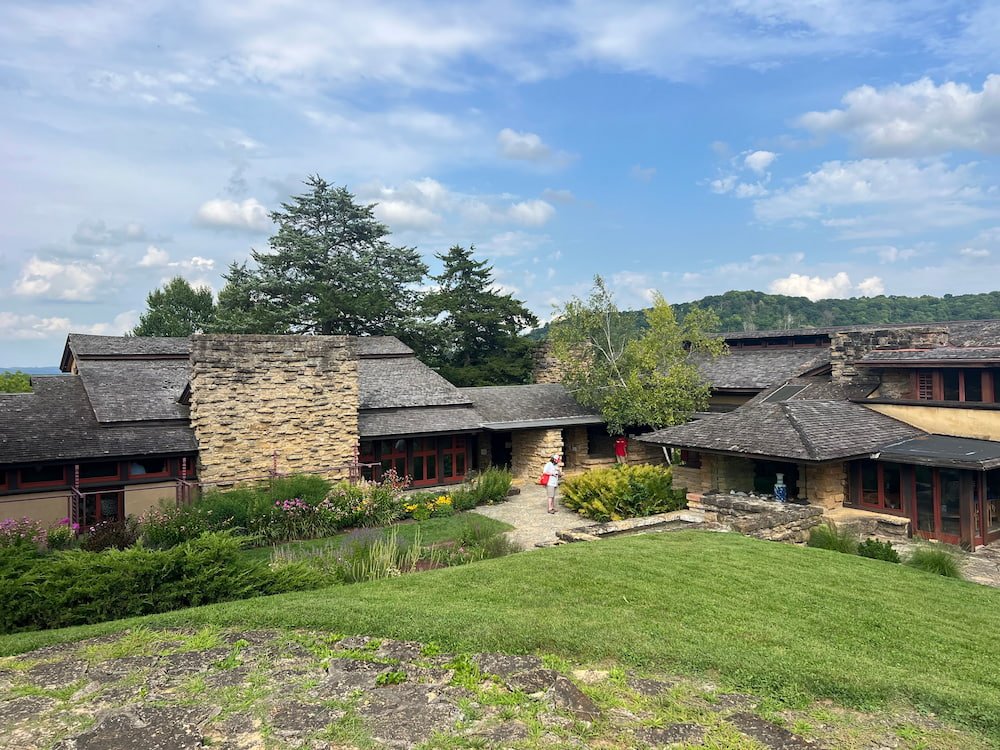

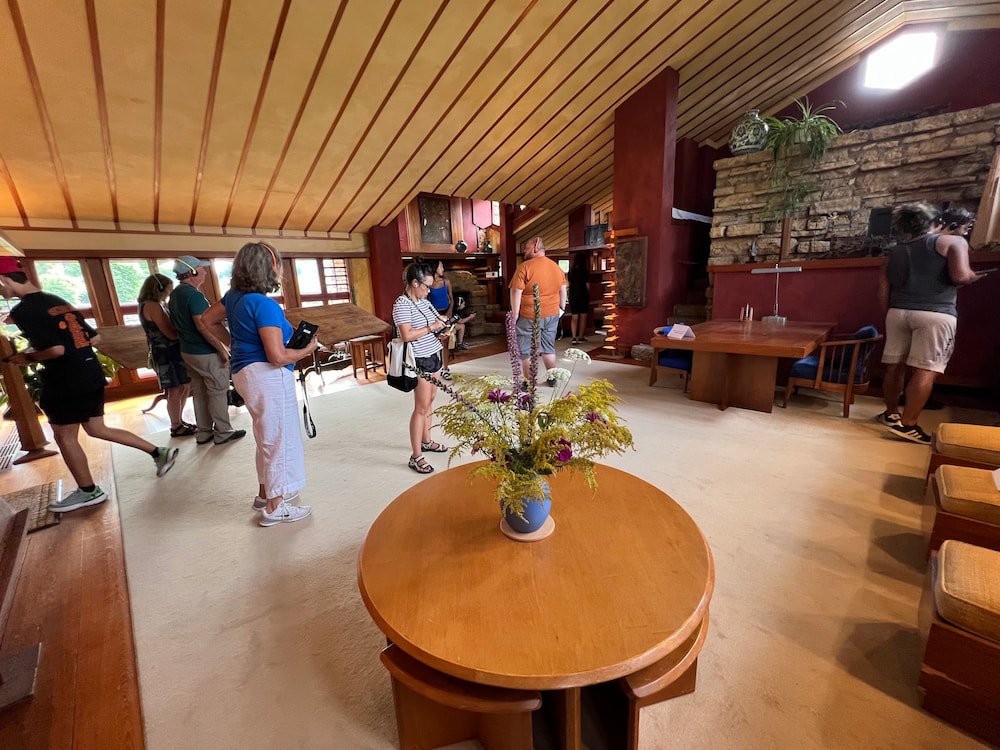
We were dropped off at the gardens surrounding Wright's home, with majestic views of the gorgeous green valleys and land around us. Not so majestic were the cow dung smells, but it was a reminder of the rural setting we were in! Since we'd been to the Frank Lloyd Wright designed home in Springfield, Illinois just recently, we were familiar with his architecture, which has a lot of varying ceiling heights, long, horizontal rooflines, open interior spaces, and Japanese influences. Wright lived in this home initially with his second wife, Mamah Borthwick--they married each other after leaving their respective spouses, and Wright also left the 6 children he had with his first wife, which back at the turn of last century would have been extremely scandalous!



Taliesin I, II, and III refer to the significant phases of alterations done to the home, as it was twice damaged due to fire. The first time, an employee set fire to the home and murdered Wright's second wife, Mamah Borthwick and seven others(!), while the other fire was due to an electrical issue. After the first fire, Wright also showed his resourcefulness by incorporating some of the burnt brick, which had turned red, into the new structures in the living room, and also sculpting it into designs such as a Buddha-like head in this room.


Other interesting Wright features include a unique "birdwalk," which is cantilevered from the house, allowing people to walk some distance from the home to observe the valley below, and feel at one with nature. There's a lot of pathways, staircases, Asian-inspired artwork incorporated into the design of the home, showing Wright's creativity and innovative use of space. While the rooms open and unfold in unexpected ways (such as with hidden staircases), it also has a lot of cohesion to it, which made for a very fascinating tour. It was great to unpack this home, and see how his design continues to affect modern day architecture.




We had a long drive east so that we could get closer to our stop on the Wisconsin coast, by Lake Michigan. We slept at the Love's Truck Stop, with the sounds of trains (as often happens!) honking occasionally through the night.
Route Map
